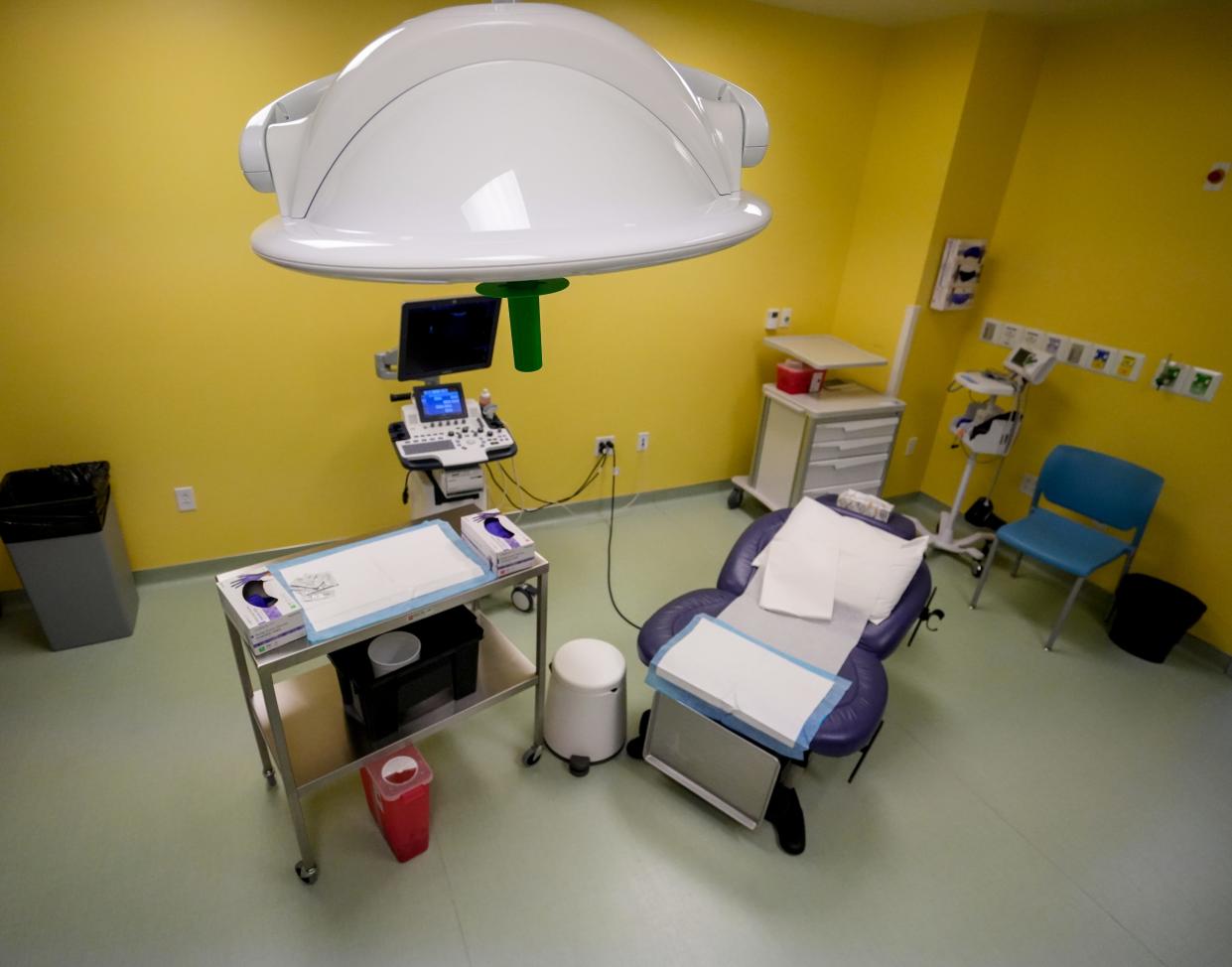National report finds sharp decline in abortions in the U.S. since Dobbs decision

New data shows a steep decline in the number of abortions being performed across the U.S. since the overturning of Roe v. Wade, with increases in states where the procedure remains available not matching declines where it is all or partially banned.
The data, collected by #WeCount ― a national abortion reporting effort led by the Society of Family Planning that includes 83% of all known abortion care providers ― compares the number of abortions performed each month nationally and by state. The latest numbers run through the first six months since the U.S. Supreme Court's decision on Dobbs v. Jackson Women's Health Organization curtailed legal access to abortion in many parts of the country.
The Society of Family Planning is a group of physicians, researchers and others who seek to be a source for data and science on contraception and abortion issues. They support "just and equitable" abortion and contraception access that is informed by science.
Here are key takeaways:
Abortions dropped by tens of thousands after Dobbs
Looking at data from the first six months following the Dobbs decision, #WeCount found that on average, there were 5,377 fewer abortions per month nationwide. An estimated 32,260 fewer abortions were provided nationwide from July to December 2022, compared to the months before the Dobbs decision.
The declines were even steeper when looking only at states ― 13 of them, including Wisconsin ― that had abortion bans in place for some or all of the six-month period following Dobbs.
In Wisconsin, abortions essentially disappeared after Dobbs, because the state immediately reverted to an 1849 law that bans doctors from performing abortions in virtually all cases. The only exception allowed by the law is for abortions that are necessary to save the life of the mother, though physicians and others have argued it is legally vague.
Still, some abortions have happened in the state since Dobbs under this exception: less than 10 per month from July to December 2022 according to the #WeCount data. That's compared to an estimated 590 and 610 abortions in April and May 2022, respectively, before the Dobbs decision came in late June.
Using the April count as a baseline, the researchers estimated there were 3,540 fewer abortions in Wisconsin in the six months following Dobbs.
Patients not flooding to states with less restrictive access
Jenny Higgins, director of the University of Wisconsin-Madison's Collaborative for Reproductive Equity and a professor of obstetrics and gynecology, said the biggest takeaway from the report was that these declines were not balanced out by increases in the number of abortions happening in states where abortion access is less restricted.
Higgins is on the steering committee for the #WeCount initiative, providing scientific consultation to the project.
"One of the things that people had expected after Dobbs was that states like California would get an influx of people ... states with relatively few restrictions," Higgins said. "What the #WeCount report shows is that we haven't seen the flooding into those states."
Wisconsin almost certainly responsible for increases in neighboring states
A research brief on the #WeCount report, compiled by the UW's Collaborative for Reproductive Equity, suggests that Wisconsinites likely represent some portion of the average monthly increases in the number of abortions performed in neighboring states in the six months following Dobbs: 35% in Minnesota, 20% in Illinois and 16% in Michigan.
But again, looking nationally and at the Midwest as a region, the increases in less restrictive states doesn't make up for the declines in more restrictive states.
Abortions provided by virtual telehealth clinics more than doubled
Nationally, the #WeCount report found that the portion of abortions provided by virtual telehealth clinics more than doubled, from 4% of all abortions in April 2022 to 11% in December 2022.
In Wisconsin, even before Dobbs, state law banned the prescription of abortion pills via telehealth.
More: Abortion pills will soon be available in pharmacies. But not in Wisconsin.
In recent weeks, however, the future of access to such pills has become a separate national debate, with the fate of mifepristone, one of the two pills used in a medication abortion, winding its way toward the U.S. Supreme Court.
More: Wisconsin Attorney General Josh Kaul joins challenge to abortion pill ruling
What the data does not measure
The #WeCount data does not shed light on the number of abortions that are happening outside of the formal health care system since the Dobbs decision, though other research has aimed to get at that question.
One early study on Aid Access, a website through which European doctors send U.S. patients medication abortion pills, found the number of requests for abortion pills in Wisconsin more than tripled in the months after the Dobbs decision.
The #WeCount data also does not shed light on how pregnancy rates in general have changed since the Dobbs decision. Anecdotally, doctors in Wisconsin have said they have seen an increase in demand for long-acting contraceptives, such as intrauterine devices or IUDs.
Higgins said the question of how long-acting contraceptives might be influencing the number of women facing unwanted pregnancies is an interesting one that needs more analysis. But she drew parallels to the closure, prior to 2017, of two abortion clinics near Green Bay. In that situation, distance to an abortion clinic correlated with an increase in birth rates, despite the availability of contraception.
"Unwanted pregnancies happen no matter what the circumstances or what the contraception use," she said.
Contact Devi Shastri at 414-224-2193 or DAShastri@jrn.com. Follow her on Twitter at @DeviShastri.
This article originally appeared on Milwaukee Journal Sentinel: Wisconsin ban among those driving steep national decline in abortion

